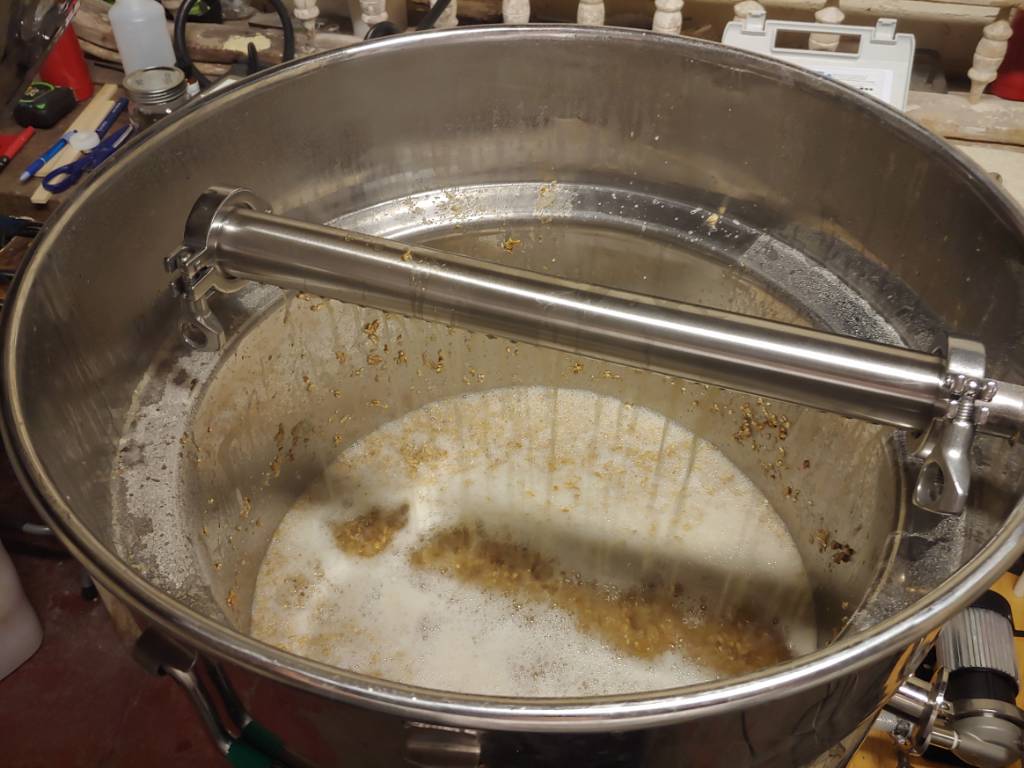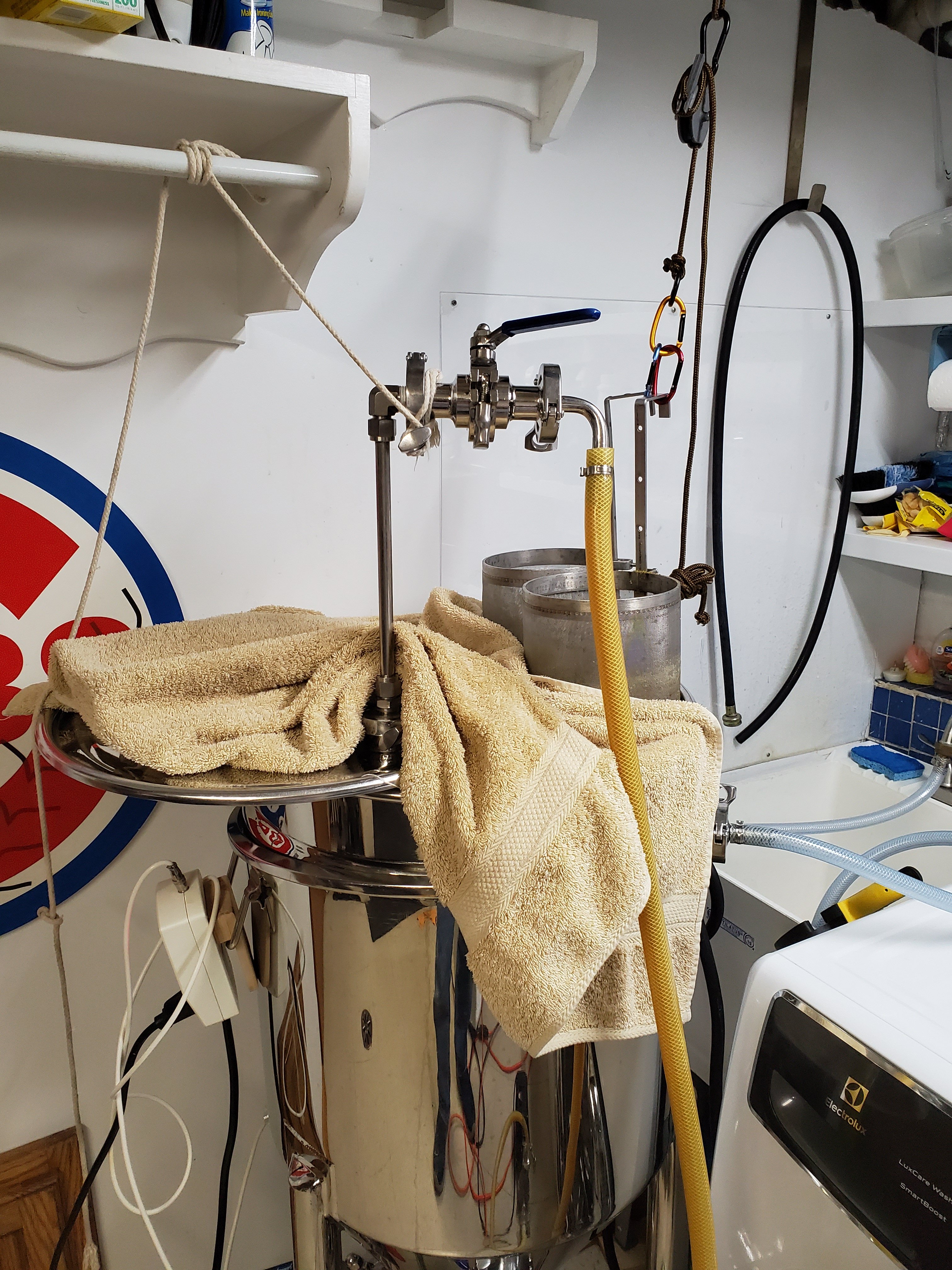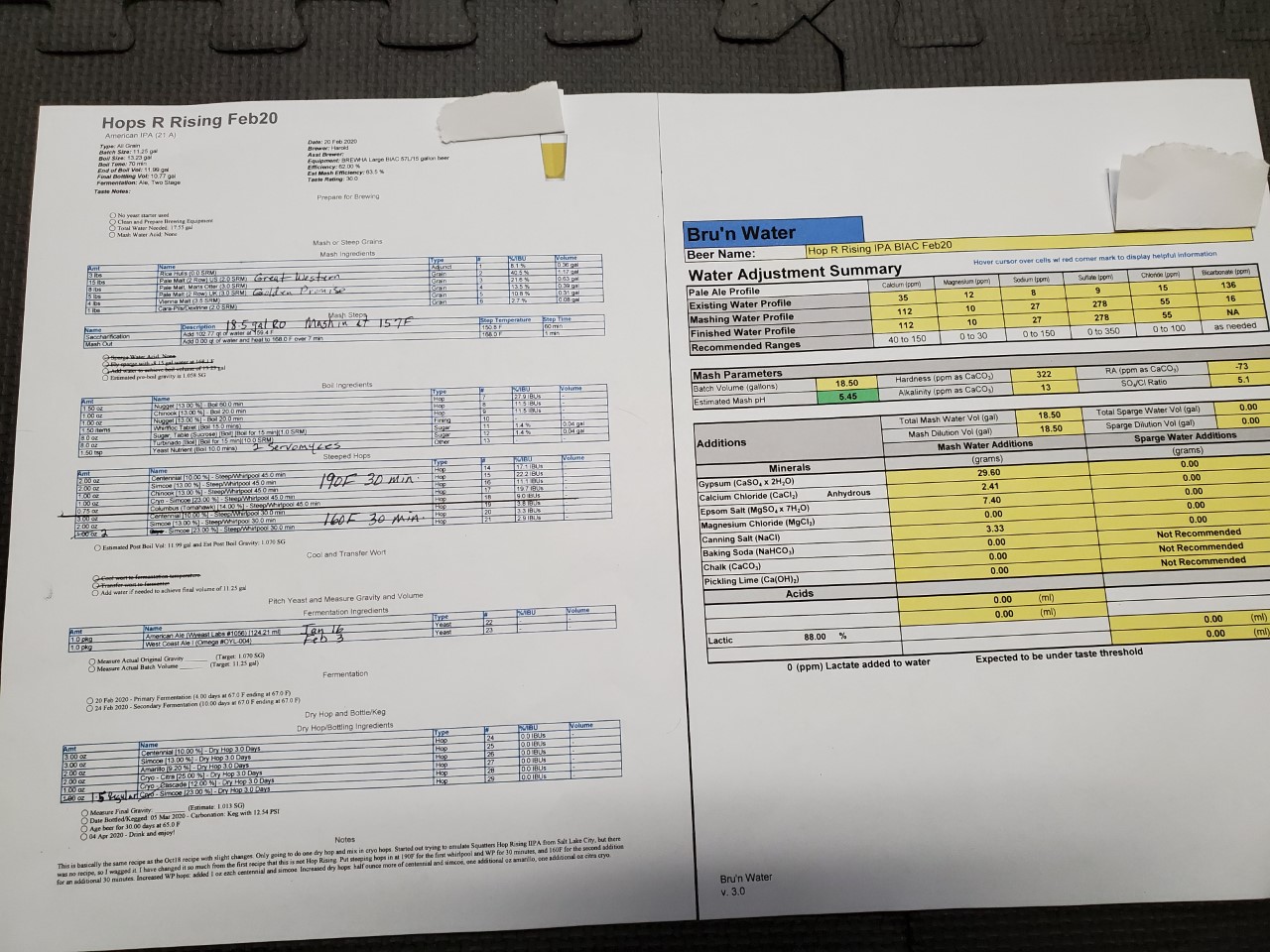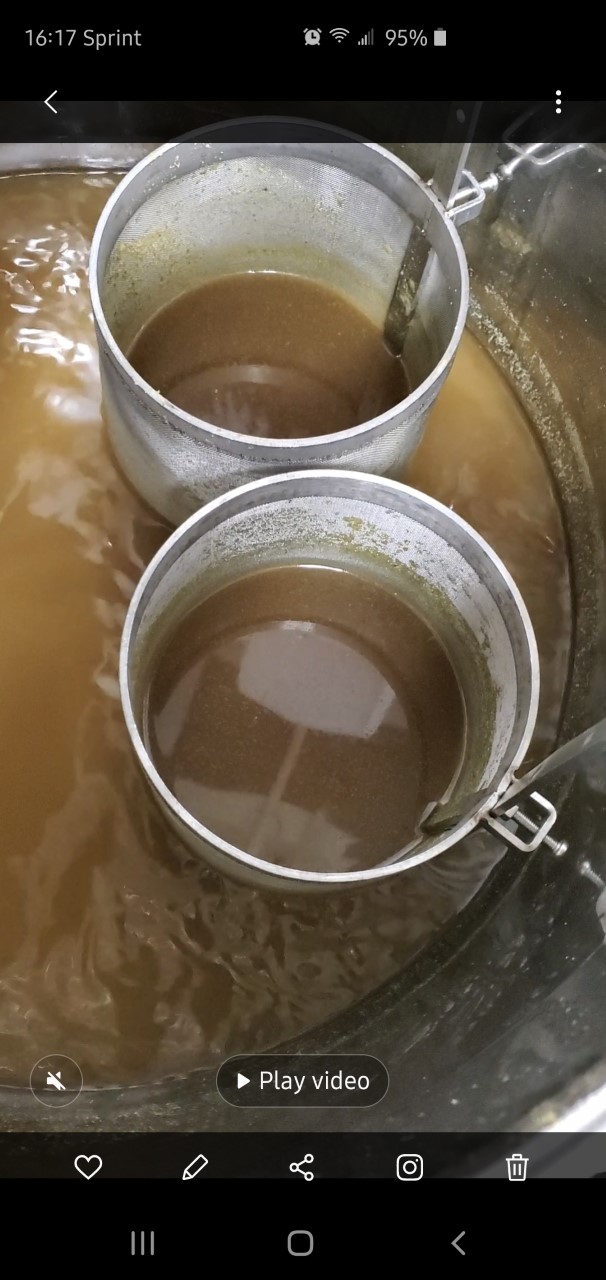I used to love visiting this site every day to see what new things were going on in the BIAC world and now hope that this that this thread comes alive again. I know that there are lots of BIAC brewers out there and the ways to brew in it are vast. I'd like to say congratulations to Limulus for turning his hobby and something he loves to do into a thing most people call work...nice.
Marshall Schott of the Brulosophy website said on a recent podcast that the biggest thing he has done to improve his IPA's is to limit the amount of oxygen that touches his beer post fermentation. I think I would have to agree with him on that. Up until recently, I would rack my beer into corny's and then add dry hops in a bag adding dry hops twice to enhance hop flavor. Brulosophy xbeeriments showed that using bags or no bags was minimal so I used bags as I did not want to transfer to another corny. In doing the dry hop routine (even though I purged my kegs with CO2) I introduced oxygen into my beer even though I purged the keg about a dozen times thru the relief valve after filling the keg. I made some excellent beers, but since I tried a different routine, my beers have gotten noticeably better.
Rather than dry hop in the corny, I just do all my dry hopping in the primary (one or two separate dry hops about 2-3 days apart). The pictures show how I do the dry hop to minimize any oxygen into the BIAC. Two days after the last dry hop is added, I drop the temperature of the BIAC to 38F to cold crash and will (sometimes) add gelatin to fine. I will then transfer the beer to purged corney's. By doing this, my beer no longer is exposed to any oxygen and I can taste the difference. No more opening the corny to expose the beer to oxygen. I was leery that this short opening and dryhopping could affect the taste...but it does...I think.
The pics show that (after I place the flask in the in the oven at 250F for 15 minutes to sterilize), I place the hops in the flask (once cooled) and then purge with CO2 two to three times to make sure no oxygen is in the flask. This is a big change from putting hops in a bag....(or not using a bag)...and putting it into the keg which most likely has some oxygen in them. I have a thin piece of plastic I cut from a lid, I sterilize the lid, the top of the flask, the opening of the BIAC lid opening, and previously the hop bags and scissors with 70% alcohol and a cotton ball (like they do when giving you a shot in the arm...it's cheap, effective and better than StarSan (for this)).
As the pictures show, I open the BIAC from the pressure relief valve, flip the flask over with the plastic cover in place, then slowly remove the plastic cover and let the CO2 purged hops flow into the BIAC. As an aside, from Scott Janish's new book, New IPA, A Scientific Guide to Hop Aroma and Flavor, I just started dropping the temperature for dry hopping to 58F to prevent off flavors.
This home-brewed Pliny I'm drinking is amazing.....
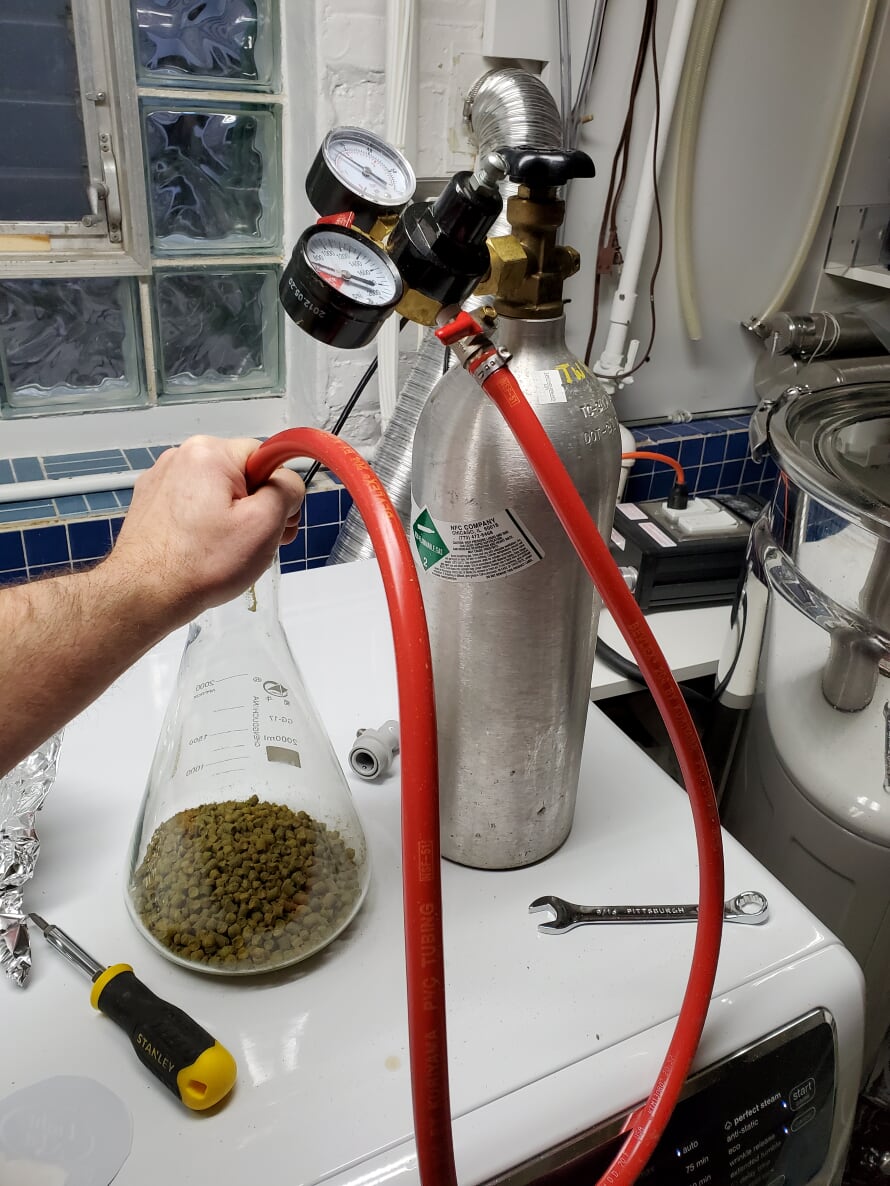
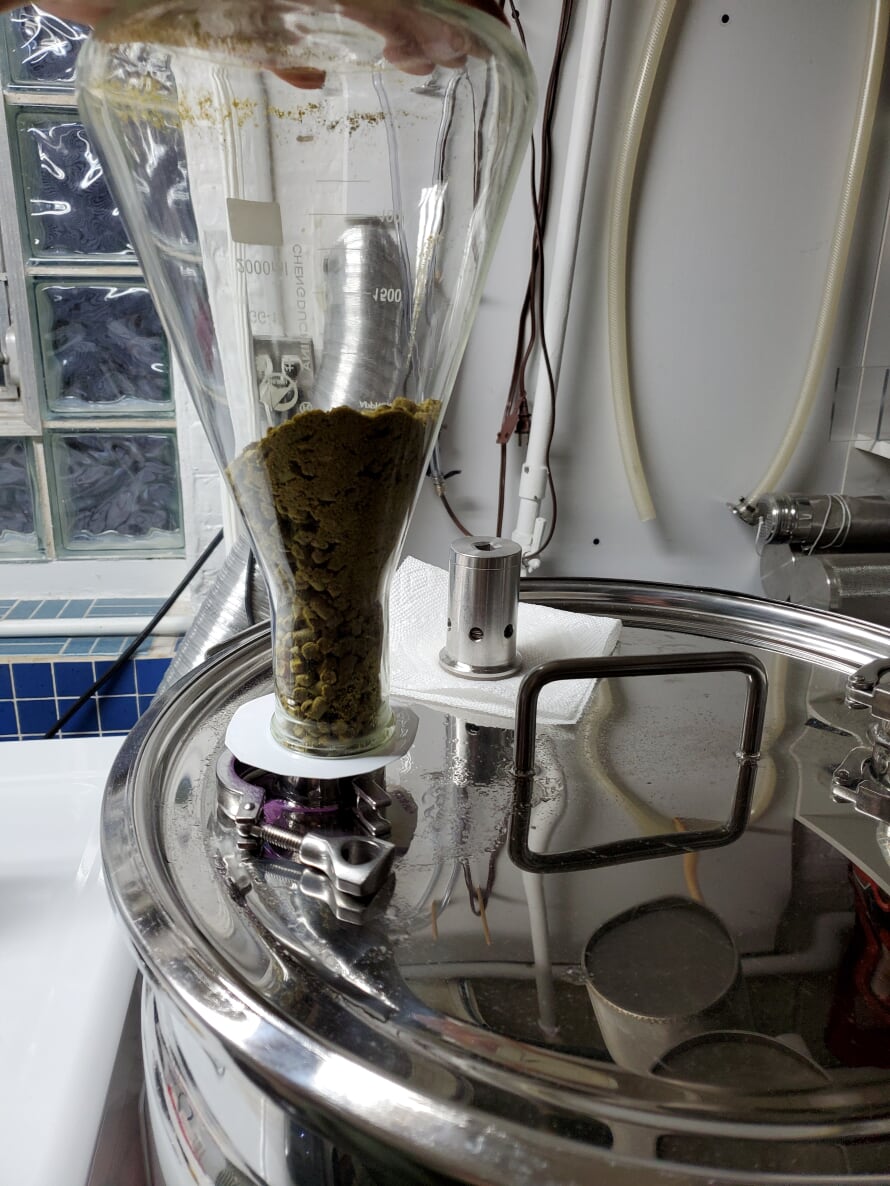
Marshall Schott of the Brulosophy website said on a recent podcast that the biggest thing he has done to improve his IPA's is to limit the amount of oxygen that touches his beer post fermentation. I think I would have to agree with him on that. Up until recently, I would rack my beer into corny's and then add dry hops in a bag adding dry hops twice to enhance hop flavor. Brulosophy xbeeriments showed that using bags or no bags was minimal so I used bags as I did not want to transfer to another corny. In doing the dry hop routine (even though I purged my kegs with CO2) I introduced oxygen into my beer even though I purged the keg about a dozen times thru the relief valve after filling the keg. I made some excellent beers, but since I tried a different routine, my beers have gotten noticeably better.
Rather than dry hop in the corny, I just do all my dry hopping in the primary (one or two separate dry hops about 2-3 days apart). The pictures show how I do the dry hop to minimize any oxygen into the BIAC. Two days after the last dry hop is added, I drop the temperature of the BIAC to 38F to cold crash and will (sometimes) add gelatin to fine. I will then transfer the beer to purged corney's. By doing this, my beer no longer is exposed to any oxygen and I can taste the difference. No more opening the corny to expose the beer to oxygen. I was leery that this short opening and dryhopping could affect the taste...but it does...I think.
The pics show that (after I place the flask in the in the oven at 250F for 15 minutes to sterilize), I place the hops in the flask (once cooled) and then purge with CO2 two to three times to make sure no oxygen is in the flask. This is a big change from putting hops in a bag....(or not using a bag)...and putting it into the keg which most likely has some oxygen in them. I have a thin piece of plastic I cut from a lid, I sterilize the lid, the top of the flask, the opening of the BIAC lid opening, and previously the hop bags and scissors with 70% alcohol and a cotton ball (like they do when giving you a shot in the arm...it's cheap, effective and better than StarSan (for this)).
As the pictures show, I open the BIAC from the pressure relief valve, flip the flask over with the plastic cover in place, then slowly remove the plastic cover and let the CO2 purged hops flow into the BIAC. As an aside, from Scott Janish's new book, New IPA, A Scientific Guide to Hop Aroma and Flavor, I just started dropping the temperature for dry hopping to 58F to prevent off flavors.
This home-brewed Pliny I'm drinking is amazing.....




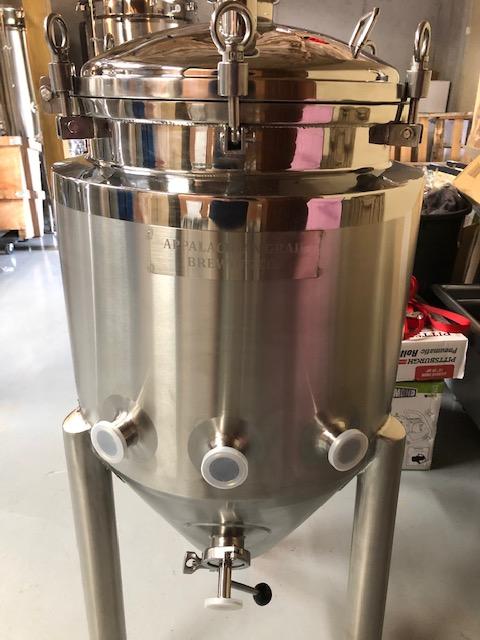
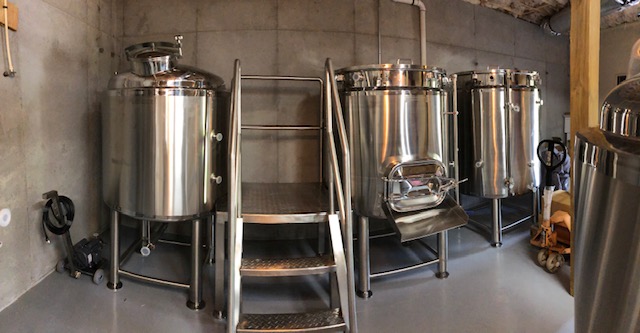
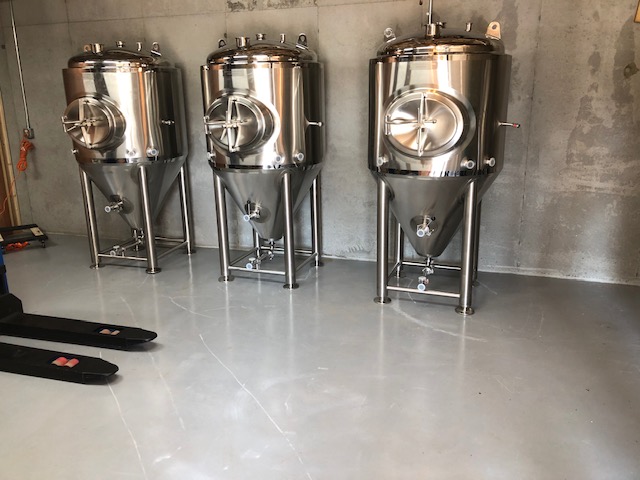
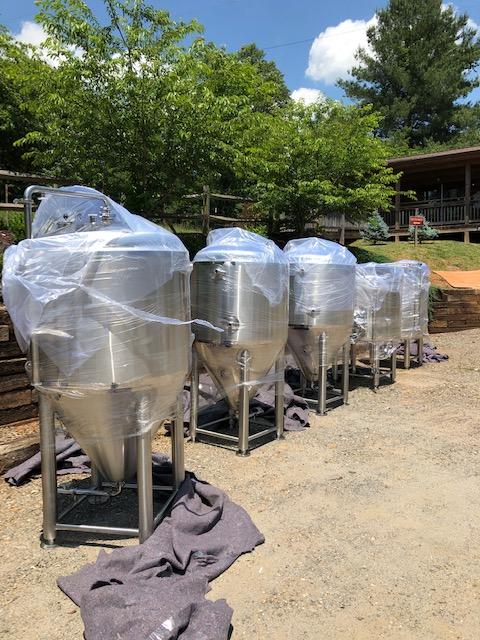
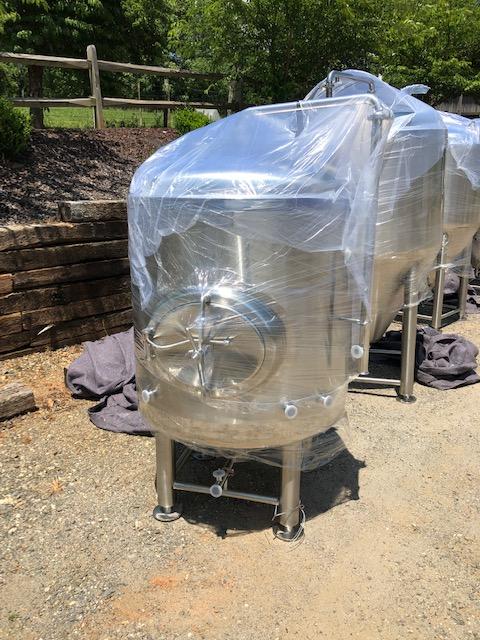

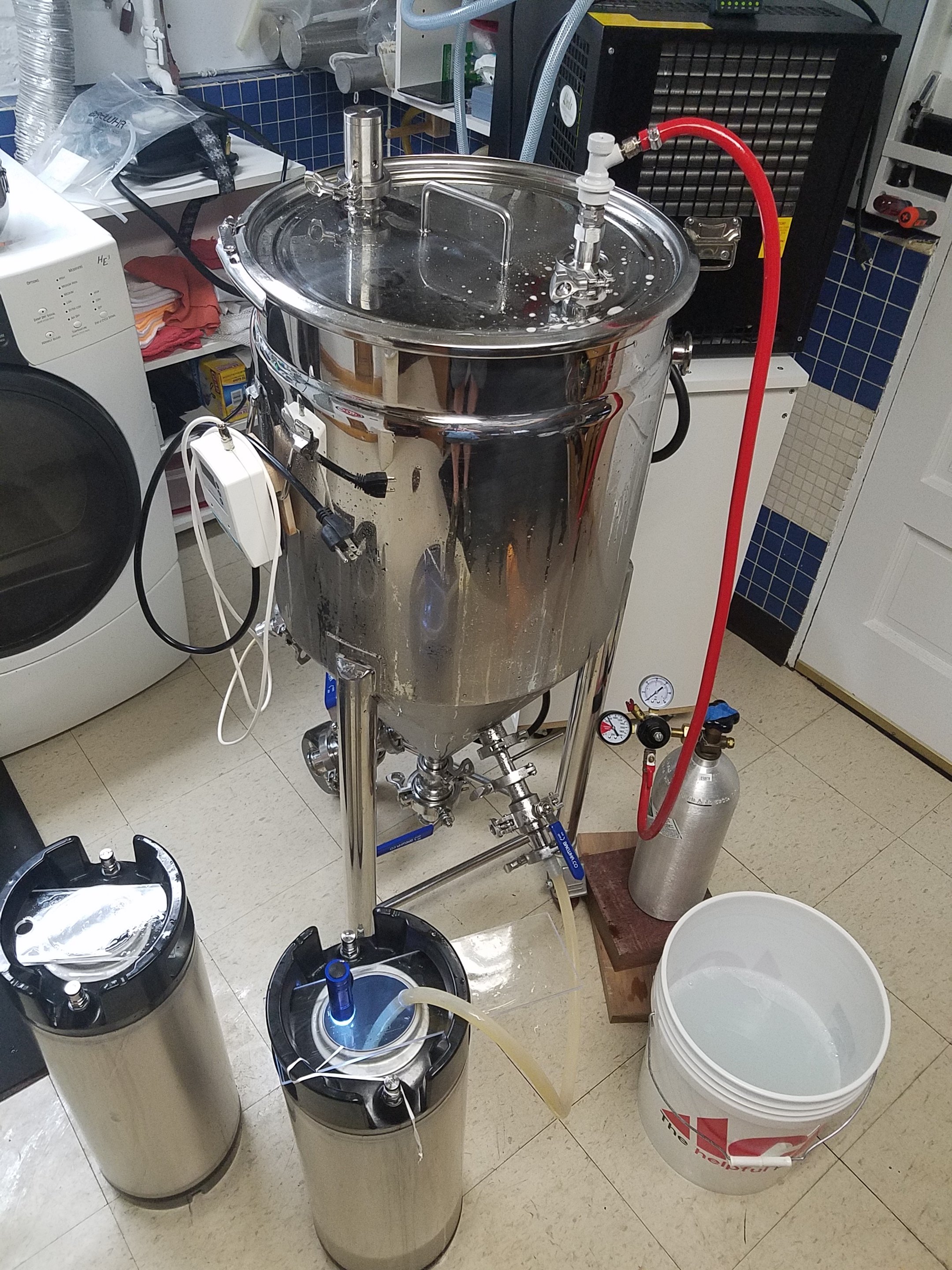












![Craft A Brew - Safale S-04 Dry Yeast - Fermentis - English Ale Dry Yeast - For English and American Ales and Hard Apple Ciders - Ingredients for Home Brewing - Beer Making Supplies - [1 Pack]](https://m.media-amazon.com/images/I/41fVGNh6JfL._SL500_.jpg)










































